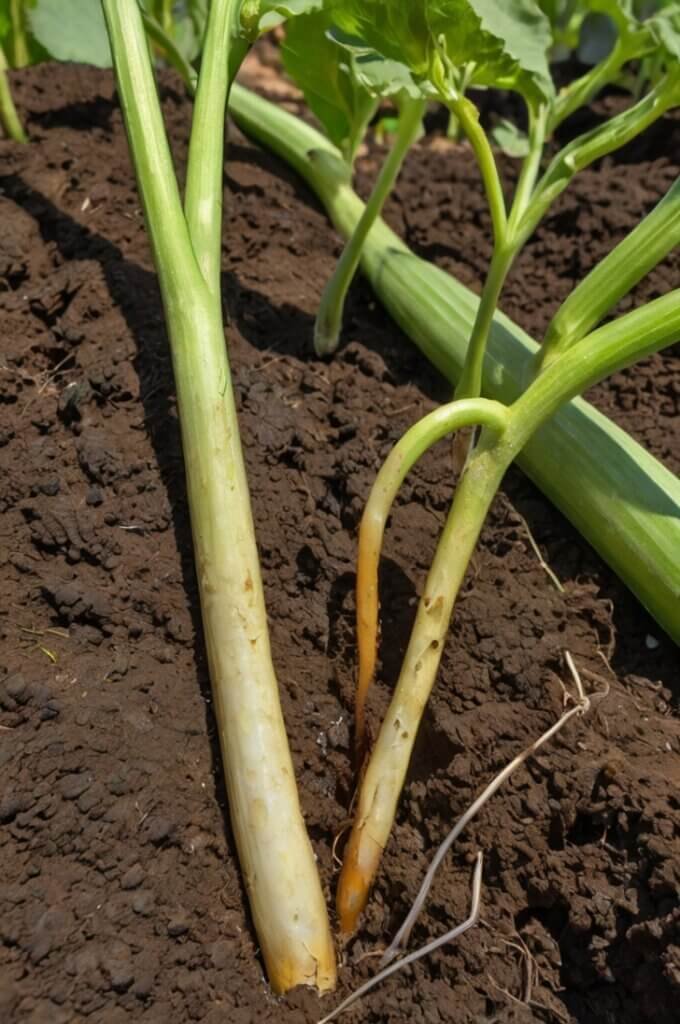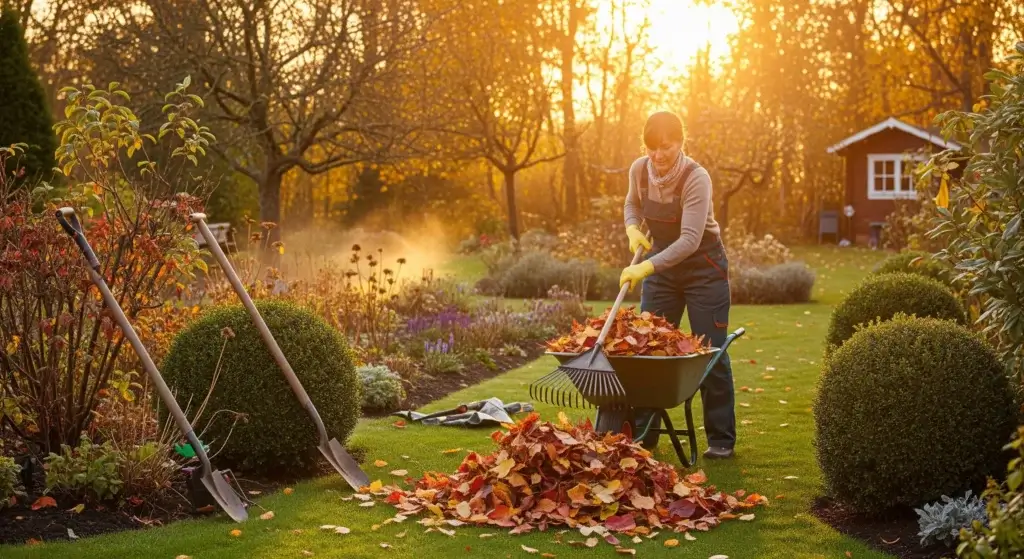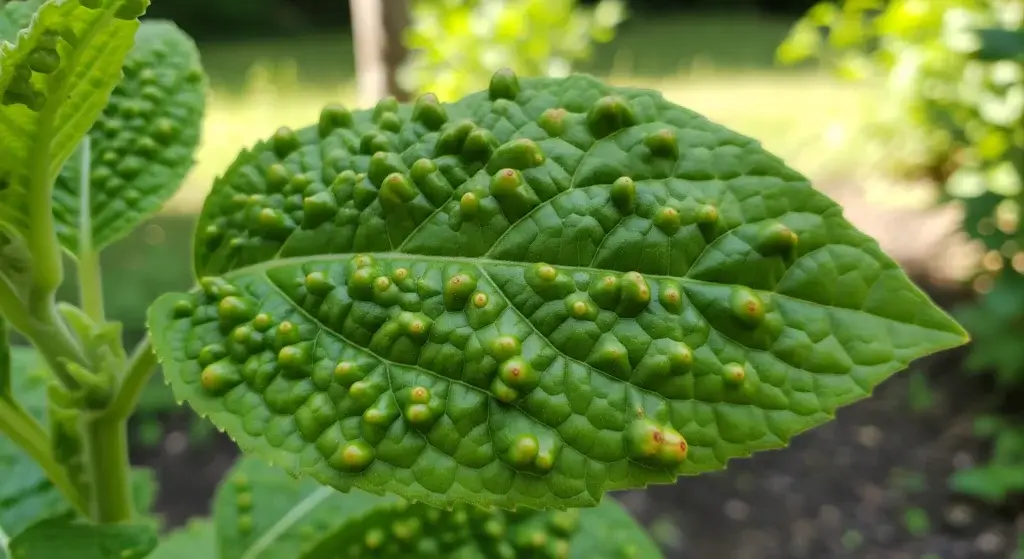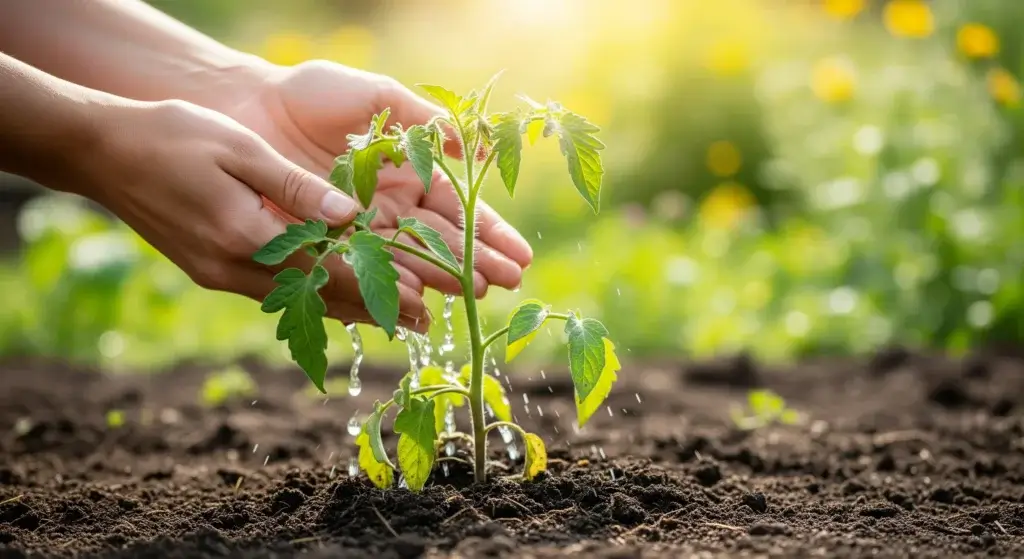
If your zucchini plants are suddenly looking more “zombie apocalypse” than “garden goals,” you might be dealing with root rot—a sneaky, soil-borne villain that’s notorious for crashing the veggie party.
Left unchecked, it can wipe out your crop faster than you can say “I was just about to harvest that!”
This guide dives into the tell-tale signs of root rot and arms you with gardener-approved, no-nonsense strategies to stop it in its tracks.
So, grab your gloves, channel your inner plant whisperer, and let’s give those zucchinis a fighting chance!
Why Root Rot is a Problem for Zucchinis
Roots = life support
Zucchinis are the high-energy rockstars of the veggie world—they grow fast and they grow big.
But behind every lush leaf and chunky fruit is a hard-working root system.
When root rot crashes the party, those roots turn mushy, brown, and useless.
It’s like pulling the plug on the plant’s life support.
No roots, no nutrients, no zucchinis. Brutal.
It’s a silent sneak attack
Root rot is basically the ninja of plant problems.
It does all its damage underground, silently sabotaging your plant before it even looks sick.
By the time you spot yellow leaves or stunted growth, it’s already staging a full-blown takeover. Not cool.
- Read also: A Guide to Eradication: Squash Bugs on Zucchini Plants
- Read also: Powdery Mildew on Zucchini: Identification, Prevention, and Treatment
It’s a master of disguise
Wilting? Yellowing leaves? You might think, “Oh, it just needs a drink” or “Maybe a little fertilizer will perk it up.” Nope.
Root rot is a shapeshifter—it mimics other issues so well, you waste precious time treating the wrong thing while the fungus throws a party in your soil.
Wet conditions = VIP pass for fungi
Zucchinis love warm weather, but mix that with summer rain or overwatering and boom—you’ve got a fungal rave going on underground.
Pathogens like Pythium, Rhizoctonia, and Phytophthora love soggy soil more than kids love Diwali sweets.
And once they’re in, they spread faster than spoilers on Twitter.
Say goodbye to your harvest
The saddest part? You might not even see a single fruit.
Root rot can stop your plant from growing, flowering, or setting fruit altogether.
It’s like prepping all season for MasterChef, only to get eliminated before plating your dish. Ouch.
Treatment’s a tall order
Once root rot digs in, it’s tough to kick it out. Fungicides? Meh.
Especially in organic gardens, where options are limited.
Most times, you’ll need to yank the plant, toss it (don’t compost it!), and treat the soil like it just went through a bad breakup—full reset mode.

The Sneaky Signs – What to Look For Above Ground
Wilting leaves (even with water)
If your zucchini looks like it just watched a sad rom-com—even after you’ve watered it—something’s up.
Healthy plants perk up post-watering.
If those leaves are still limp and lifeless, it’s not thirst—it’s root rot waving a red flag.
Think of it as your plant ghosting you after you’ve done everything right.
Yellowing leaves
Lower leaves turning yellow isn’t just a fashion choice—it’s a distress signal.
Root rot often starts by cutting off nutrient supply to the base, so the oldest leaves throw in the towel first.
If your plant’s going gold but not in a good way, it’s time to dig deeper.
Stunted growth
Zucchinis are supposed to grow like they’ve had five espressos.
So if yours is just… chilling, not stretching, not flowering, not doing much of anything—it might be because its roots aren’t working properly.
Root rot turns your zucchini into that one friend who RSVP’d to the gym but never showed up.
Discolored stems near the soil
Take a peek at the stem where it meets the soil.
If it’s soft, brown, or looks like it’s melting faster than ice cream in May, that’s classic root rot behavior.
The infection travels from the roots up, and once it hits the stem, your plant’s in the danger zone.
Lack of new growth
A zucchini that’s stopped pushing out new leaves or buds has likely gone into survival mode.
It’s focused on trying to stay alive instead of growing.
That’s a major clue that the root system is compromised.
No new growth = no new zucchinis. And that’s just rude.
Digging Deeper – What the Roots Might Look Like
Brown or black roots
Healthy roots should be creamy white and firm—like a fresh bean sprout.
If they’re brown, black, or look like they’ve had a rough night out, that’s a telltale sign of rot.
Think of it as root-level burnout.
Mushy or slimy texture
Rotten roots feel like overcooked noodles—squishy, slimy, and ready to fall apart.
That’s fungus at work, breaking things down like it’s hosting a compost rave.
Healthy roots should feel crisp and snappy, not like they belong in a horror movie.
Foul or bad smell
If you get a whiff of something foul when you disturb the soil—kind of like soggy gym socks mixed with swamp vibes—you’re smelling anaerobic bacteria doing their thing.
And no, your zucchini is not supposed to smell like that.
Roots pulling away easily
When you lift the plant and the roots slip off or disintegrate with the slightest tug, it’s game over.
A healthy root system clings to soil and shows some resistance.
Rotten roots, on the other hand, check out faster than your buddy at a group dinner when the bill hits the table.

Why Did This Happen? Simple Causes
Too much watering
Zucchinis love a good drink, but if you’re watering them like you’re trying to fill a swimming pool, their roots are basically drowning.
Even plants have a hydration limit—this ain’t a Gatorade commercial!
Poor drainage in the soil or pot
If your soil or pot’s got drainage issues, water just hangs around like an uninvited guest at a garden party.
Roots need air, not a mud bath.
Without good drainage, you’re setting up the perfect spa day for fungal pathogens (and trust us—they love wet feet).
Soggy soil that stays wet for too long
Some soils are like that one friend who never knows when to leave.
They hold onto water way too long, turning your garden bed into a mushy mess.
If your soil feels more like brownie batter than crumbly cake? Yeah, time for a makeover.
What Can You Do? (If It’s Not Too Late)
Stop watering for a while
If your soil’s already soggy, skip the next few watering sessions.
Think of it like putting your plant on a juice cleanse—less liquid, more breathing room.
Improve drainage if it’s in a pot
Got your zucchini in a pot? Make sure it’s not sitting in a puddle.
Elevate the pot, clear those drainage holes, and if needed, toss in some gravel or perlite to keep things flowing like a chill garden podcast.
Gently remove any very rotten parts if possible
If some roots or stems are clearly goners—brown, mushy, and sad—go ahead and snip them off. Be gentle though, we’re aiming for plant surgery, not a horror movie.
Repotting in fresh soil if in a pot
If your zucchini’s been living in a swamp, consider repotting it in fresh, well-draining soil.
It’s like moving it from a haunted house into a sunny new apartment with great airflow.

Prevention is Key – How to Avoid Root Rot
Don’t overwater
Overwatering is the plant parent equivalent of texting “You up?” every 10 minutes.
Trust that your zucchini knows how to hydrate.
Water when the top inch of soil feels dry—not on a strict schedule.
Make sure your soil drains well
Your zucchini wants a penthouse suite, not a basement flood zone.
Mix in some compost, perlite, or sand so the soil drains faster than garden gossip.
Use pots with drainage holes
If your plant’s living in a pot with no drainage holes, that’s basically plant jail.
Free the roots—let the excess water escape and give those roots some breathing room!
Water deeply but less often
Think quality over quantity.
Give your plants a deep soak occasionally, not a sprinkle every day.
It encourages the roots to grow strong and go deep—like a great origin story.
- Read also: Unveiling the Best Companion Plants for Zucchini Success
- Read also: A Comprehensive Guide: How to Harvest Your Zucchini Plants
Final Verdict – Don’t Let Root Rot Be the Villain of Your Veggie Plot
Catching root rot early is like spotting the plot twist before the season finale—totally game-changing.
Keep an eye out for the drama: yellowing leaves, sad wilting, stunted vibes, and roots that smell funkier than last week’s leftovers.
But here’s the good news—if you stay sharp and stick to smart garden habits (like proper watering, good drainage, and a little root TLC), you can keep your zucchinis thriving and drama-free.
Think of it as giving your garden the superhero origin story it deserves.
Healthy roots = happy fruits. So grab your gloves, trust your instincts, and grow like a boss.



